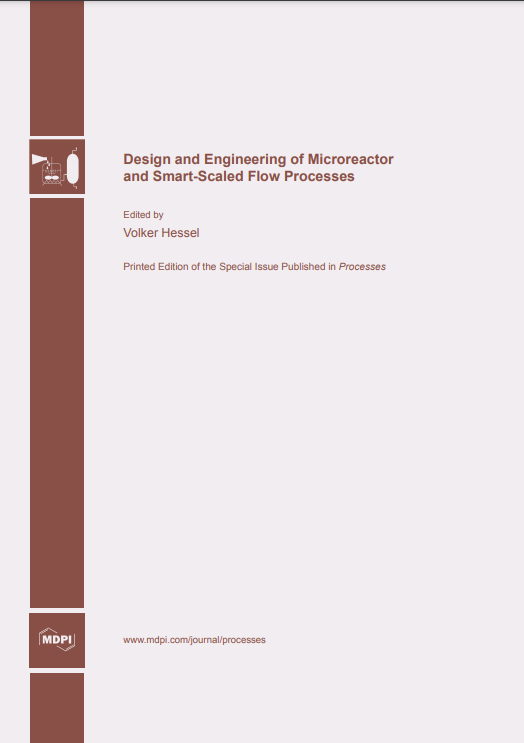Design and Engineering of Microreactor and Smart-Scaled Flow Processes
Editorial: MDPI
Licencia: Creative Commons (by)
Autor(es): Hessel, Volker
Microreactors are small devices with sub-millimeter internals which have superb mass and heat transfer. Initially, they were used for reactions with very high demands on the latter, e.g. very exothermic reactions, gas-liquid reactions with interfacial transport issues, reactions with very fast kinetics which demands even faster mixing, and more. In this way, the processing window was opened widely and, also due to the minute volumes only present in the reaction zone, safe processing under otherwise hazardous conditions was enabled. This includes processing of reactions which are prone to thermal runaway and in the explosive regime. Scale-up of promising reactions and products which was hindered with conventional technology is now possible using the new equipment. This has widened the process development possibilities in chemical industry.
In the last years, micro process technology was not only used for the very problematic synthetic issues which formerly had a dead-end position in industry’s process development. Rather, the scope of chemical reactions to be processed in microreactors was considerably widened by exploring new process conditions with regard to temperature, pressure, concentration, solvents, and more. This is commonly referred to as flow chemistry. This allowed to reduce the processing time-scale for many reactions to the minute range or even below which fits well to the residence times of microreactors. In addition, the process integration of several reactions in one flow to a multi-step synthesis has opened a new door in molecular diversity as well as system and process complexity. The same holds for the combination of reactions and separations in micro-flow. To achieve throughputs relevant for industrial production, smart scale-out to milli-flow units has established and supplemented the num­bering-up concept (parallelization of microchannels/-reactors operated under equal conditions).
[Basel: 2015]
Compartir:
Una vez que el usuario haya visto al menos un documento, este fragmento será visible.


